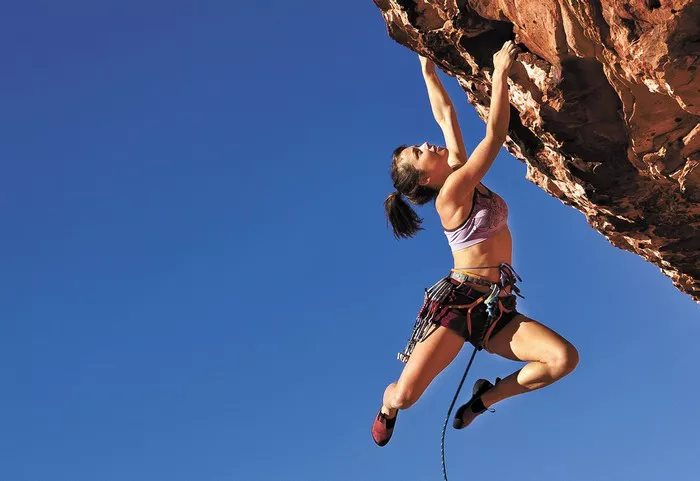In the realm of outdoor adventures, few pursuits captivate the human spirit quite like mountaineering and trekking. Both activities offer exhilarating experiences in nature, allowing individuals to immerse themselves in awe-inspiring landscapes and push the boundaries of physical endurance. However, despite their similarities in exploring rugged terrains and reaching lofty heights, mountaineering and trekking are distinct disciplines with unique challenges, objectives, and skill sets. Understanding the differences between these two pursuits is essential for aspiring adventurers to choose the right path and embark on a journey that aligns with their interests, capabilities, and aspirations.
Defining Mountaineering
Mountaineering is a demanding endeavor that involves ascending mountains, often requiring technical skills, specialized equipment, and careful planning. Unlike trekking, which primarily focuses on walking along established trails, mountaineering encompasses a broader range of activities, including rock climbing, ice climbing, and glacier travel. Mountaineers face a multitude of hazards, including steep slopes, unpredictable weather conditions, crevasses, avalanches, and altitude sickness, making it a high-risk pursuit that demands experience, physical fitness, and mental fortitude.
At the heart of mountaineering lies the pursuit of summiting peaks, whether they be towering Himalayan giants like Everest and K2 or challenging alpine peaks in the European Alps or North American Rockies. Achieving a summit involves navigating complex terrain, overcoming obstacles, and often enduring prolonged exposure to harsh environments. Success in mountaineering is not solely measured by reaching the top but also by safely returning to base camp, as the descent poses its own set of challenges and risks.
Trekking: A Journey Through Nature
Trekking, on the other hand, is a more accessible and leisurely form of outdoor exploration that entails hiking through natural landscapes, usually along established trails or routes. Unlike mountaineering, trekking does not typically involve technical climbing or the need for specialized equipment beyond basic hiking gear such as sturdy boots, clothing layers, and a backpack. Trekkers can enjoy a wide range of experiences, from gentle walks through verdant valleys to challenging multi-day expeditions in remote wilderness areas.
While trekking may lack the extreme physical and technical demands of mountaineering, it still offers ample opportunities for adventure and discovery. Trekkers can explore diverse ecosystems, encounter wildlife, and marvel at breathtaking scenery while immersing themselves in the tranquility of nature. Whether trekking through ancient forests, traversing rugged coastlines, or ascending mountain passes, the journey itself becomes the reward, fostering a deep connection with the natural world and providing moments of introspection and contemplation.
Key Differences
1. Technical Skills and Equipment:
Mountaineering requires proficiency in technical skills such as rope management, ice axe and crampon techniques, and route finding. Specialized equipment such as harnesses, helmets, and protection devices are essential for safety.
Trekking relies primarily on hiking skills such as navigation, pacing, and endurance. Basic equipment includes a comfortable backpack, trekking poles, and appropriate clothing for varying weather conditions.
2. Terrain and Difficulty:
Mountaineering often involves navigating rugged, alpine terrain with steep slopes, glaciers, and exposed rock faces. Routes may require advanced climbing techniques and entail significant elevation gain.
Trekking routes encompass a variety of landscapes, including forests, valleys, and mountainous terrain. While some treks may involve challenging ascents and high altitudes, they are generally less technical and demanding than mountaineering expeditions.
3. Objectives and Challenges:
The primary goal of mountaineering is to summit peaks, which requires overcoming numerous obstacles and hazards. Success is measured by reaching the designated summit and safely descending.
Trekking focuses more on the journey itself, with objectives ranging from reaching a scenic viewpoint or remote village to completing a long-distance trail. The challenge lies in endurance, navigation, and experiencing the natural environment rather than reaching a specific destination.
4. Risk and Safety Considerations:
Mountaineering involves inherent risks such as falls, avalanches, and altitude-related illnesses. Proper risk assessment, technical skills, and knowledge of mountain hazards are crucial for mitigating dangers.
Trekking carries fewer inherent risks but still requires precautions such as carrying essential supplies, informing others of your itinerary, and being prepared for changes in weather and trail conditions.
Choosing the Right Adventure
Whether one is drawn to the adrenaline-fueled challenges of mountaineering or the soul-nourishing experiences of trekking, both pursuits offer profound opportunities for personal growth, adventure, and connection with nature. Ultimately, the choice between mountaineering and trekking depends on individual preferences, skill levels, and objectives.
For those seeking the ultimate test of skill and endurance, mountaineering provides a thrilling journey to conquer the world’s highest peaks and push the limits of human exploration. However, it requires dedication, training, and a deep respect for the mountains.
On the other hand, trekking offers a more accessible avenue for outdoor enthusiasts to immerse themselves in nature, embark on epic journeys, and forge unforgettable memories along the trail. Whether embarking on a weekend backpacking trip or undertaking a months-long thru-hike, trekkers can find solace, inspiration, and adventure amidst the beauty of the natural world.
Conslusion
In conclusion, whether one chooses to ascend to the heights of towering summits or wander through the valleys below, the spirit of adventure beckons to all who seek to explore the great outdoors. Mountaineering and trekking may represent different paths, but both lead to the same destination: a deeper appreciation for the wonders of nature and the indomitable spirit of the human explorer.

